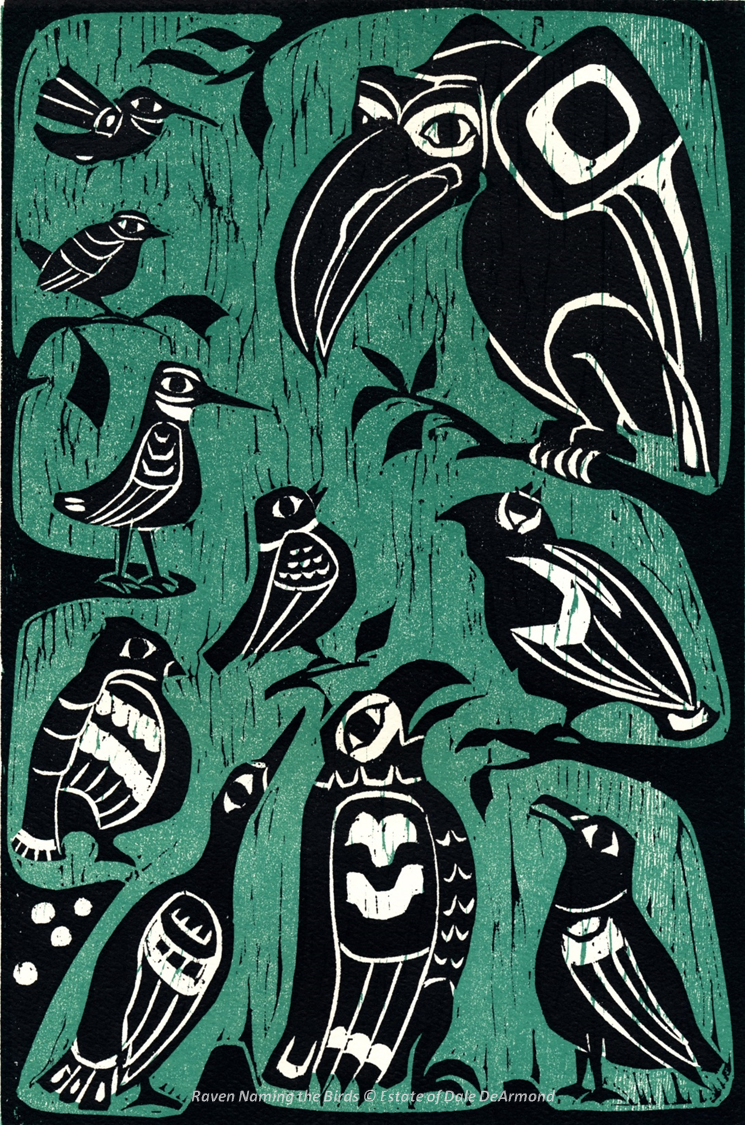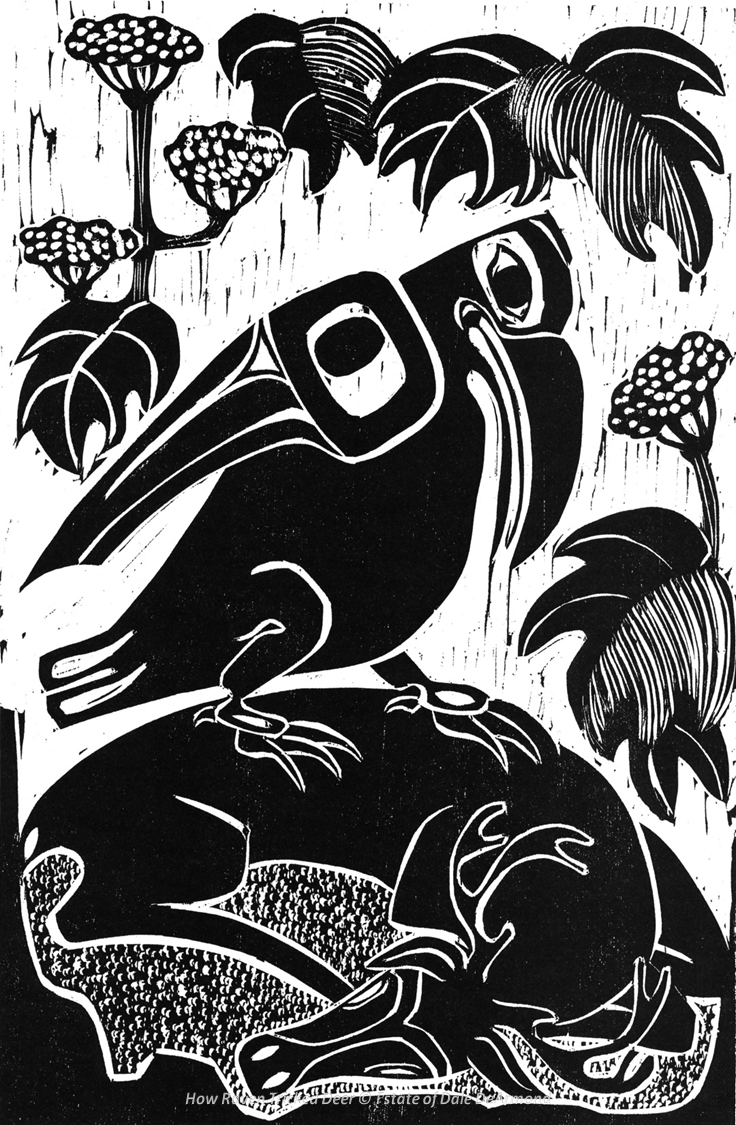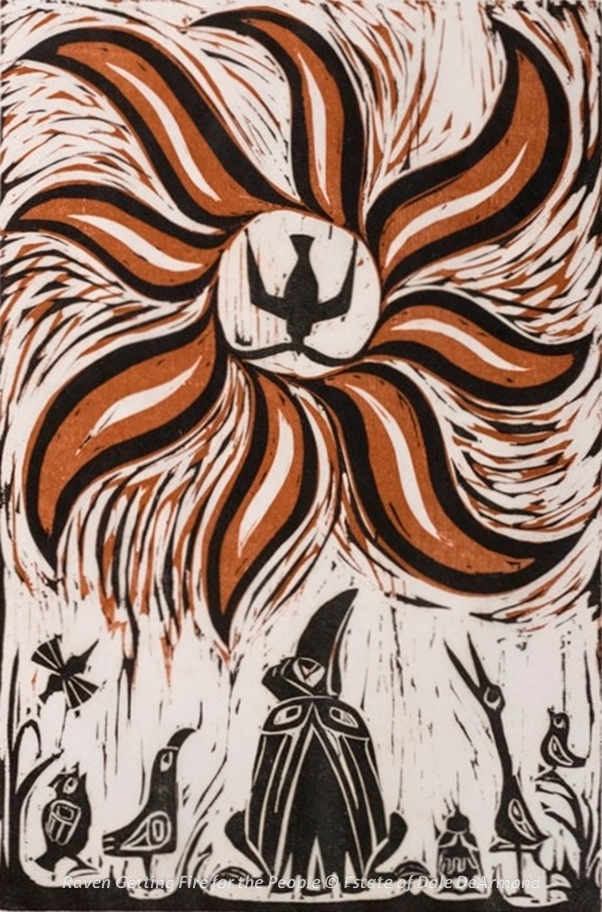The twenty-eight legends told in the book depict various Tlingit myths and tales of the Raven. Some of these stories were told to DeArmond by Alaska Natives themselves, while others had been recorded by missionaries like John B. Driggs, whose Eskimo legends were first published in 1905. But most came from ethnologists John R. Swanton and Frederica de Laguna.
For this book, DeArmond drew heavily from two of Swanton's works: Haida Texts and Myths and Tlingit Myths and Texts, originally published in 1905 and 1909, respectfully. She wrote of the stories: "the Raven cycle seems to me to capture the very essence of the land and people. At the same time it contains fascinating elements of the universal myths: the creation, the great flood, the virgin birth and others." She later said "Swanton should be more honored in Alaska than he has been. He performed a marvelous work in recording the myths and legends of the Tlingit and Haidas at the beginning of the (20th) century. Many of the stories might otherwise have been lost to us entirely."
Although DeArmond praised Swanton for recording the myths, she said he was primarily a linguist, and he did not write them out for people to read easily. She tried to follow the main outlines of the stories as he wrote them, but said he did some strange things, including "putting all of the ribald parts in Latin – and that his sense of ribaldry was that of a 19th century Yankee. With the help of dictionaries and some other people, I had to do a lot of translating."
I came upon the Raven cycle of myths when I first went to Sitka. I realized that this was the perfect medium for illustrating the raven stories. The thirty woodcuts for the raven book were my first big woodcut project and it took me two years to complete.
– explained Dale (from Jean Lester's 1992 book Faces of Alaska from Barrow to Wrangell)
A total of thirty woodcut prints were illustrated in Raven, each available in a regular edition of thirty-five, along with five artist proofs. All images are roughly 10" x 15", printed on Tableau paper, and their print sizes roughly 12" x 18". Although most prints are dated 1963, DeArmond carved the yellow cedar wood blocks and pulled a few proofs, color separations, and a few regular prints in 1962. A complete collection is archived with the Sitka Historical Society in Sitka; the Anchorage Museum in Anchorage; and the Alaska State Museum in Juneau. Each woodcut was produced in two colors (with the exception of one) and were initially available for $10.00 each. All editions were unavailable for purchase by the late 1960s.
From the verso of a framed Raven woodcut (c. 1972):
The only complete set of woodcuts by Juneau's Dale DeArmond depicting the stories of Raven in folktales and legends of the Tlingit and Haida Indians will be exhibited in a special Alaska section of the Washburn Gallery of the Boston Museum of Science. The collection, owned by (…) will be on display from June 19 through Sept. 6. The set of woodcuts, in constant demand, we are told and can readily believe, has been on display in Guadalajara, Mexico for the past several months, and following the Boston exhibit will be shown in Pasadena, California. (…) is vice president and assistant to the president of (…). There are many versions of the Raven legends, but, says Mrs. DeArmond, "Raven always seems to come through as a combination of God, Superman, W.C. Fields, and a Brooklyn con artist. He is omnipotent, beneficent and crooked as a dog's hind leg."
For the prints in this series, click here for information on DeArmond's book Raven: A Collection of Woodcuts.


